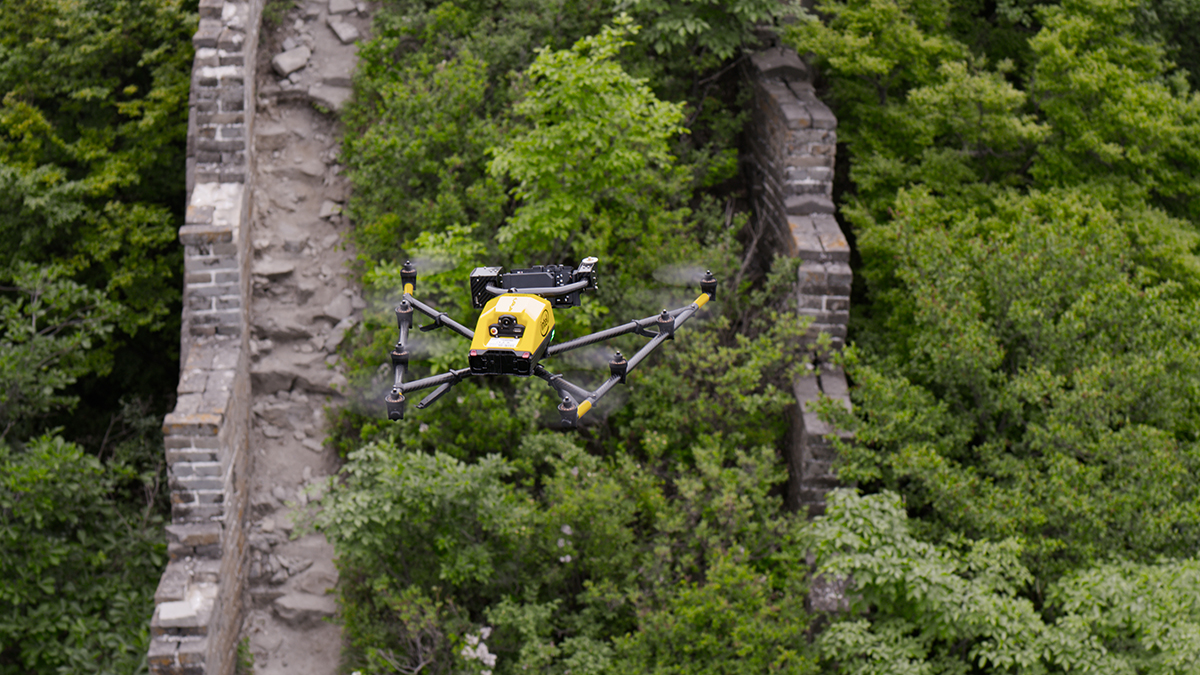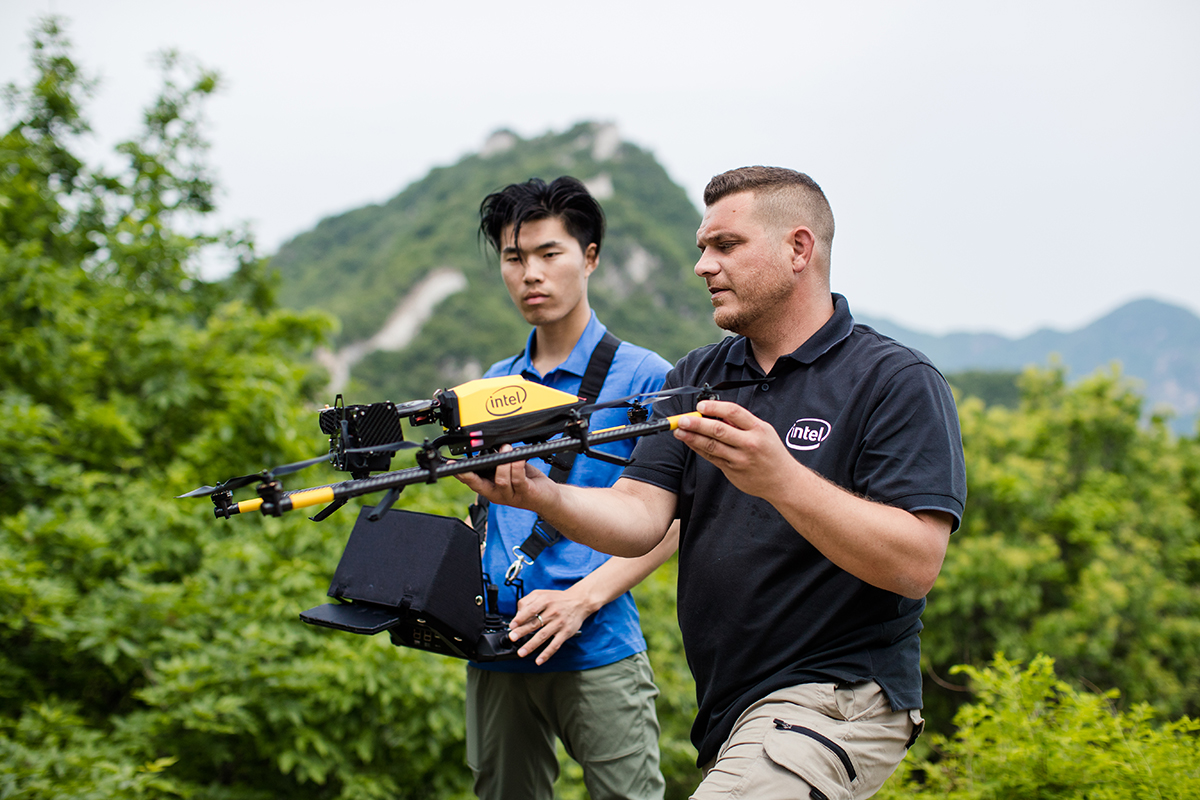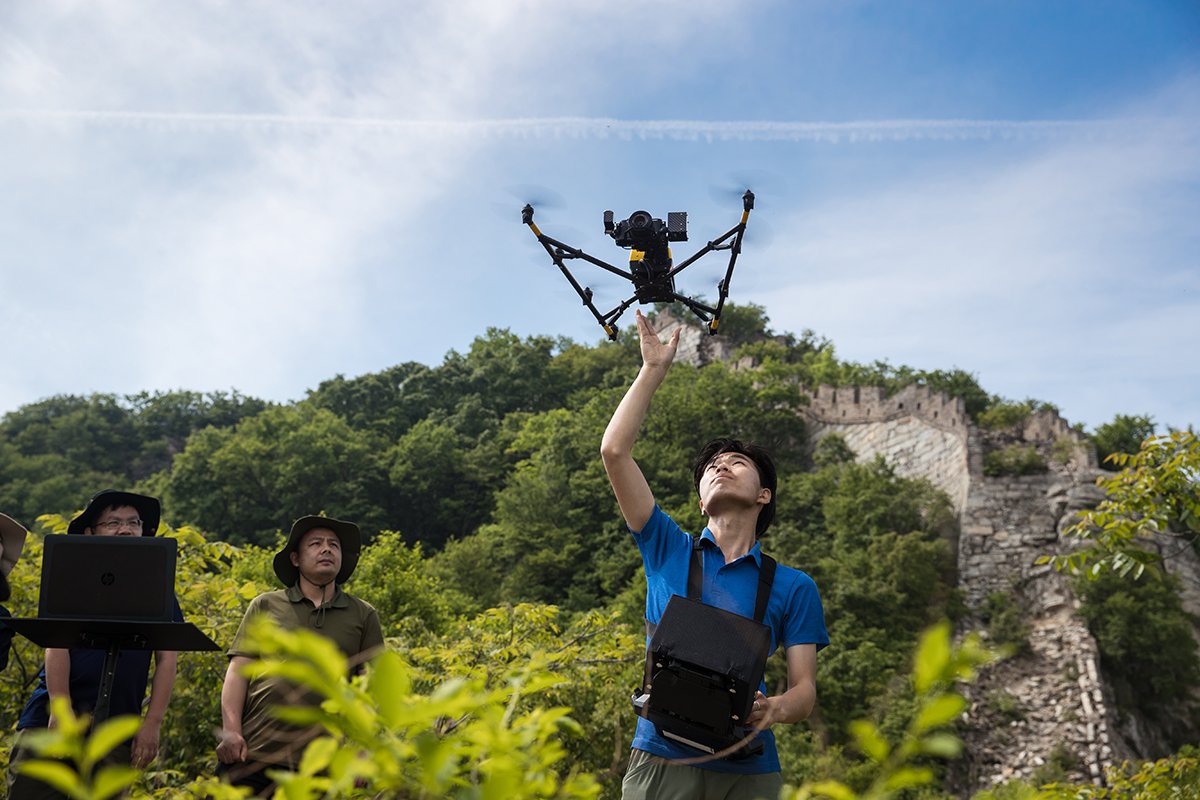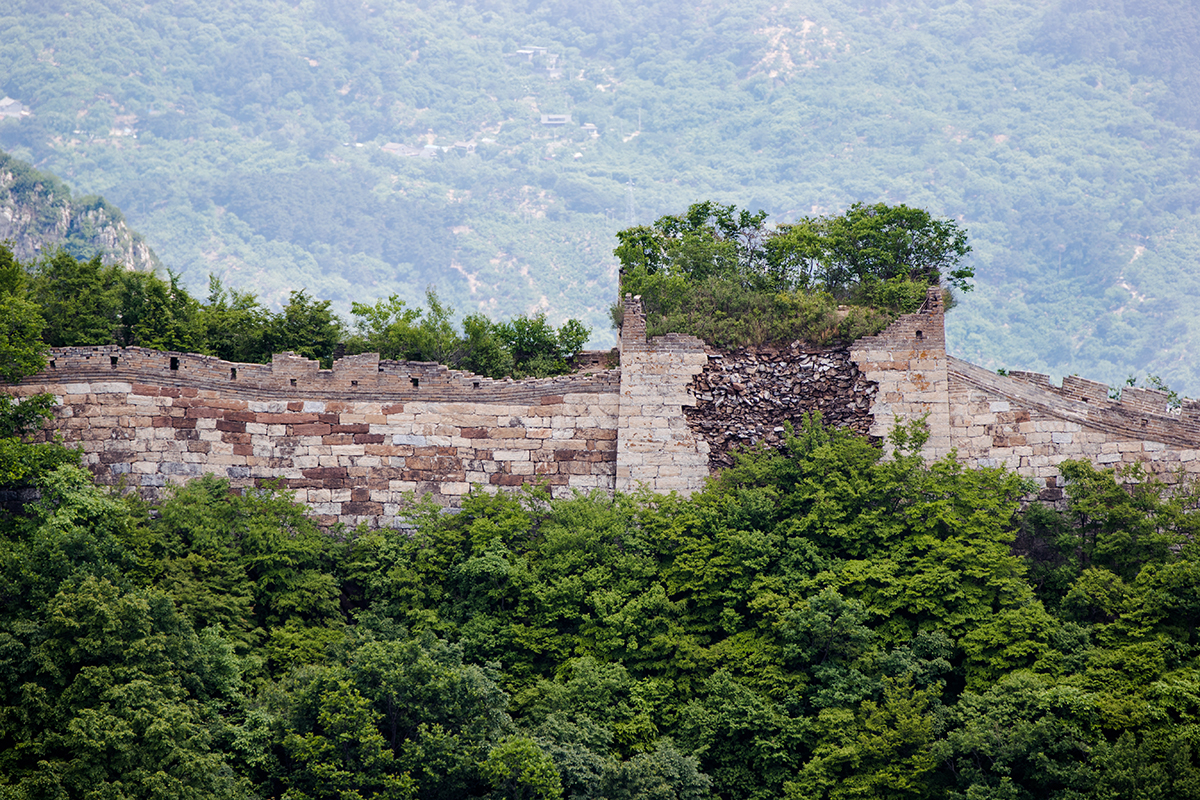Drones technology has been used to map the past and future in profound ways, and new discoveries are being made all the time. A massive 'henge' was discovered at Newgrange thanks to a drone, while UAV use in archaeology has given experts a new tool to help them better understand past landscapes from every era. As further evidence of this impact, drones have given conservationists a whole new approach around their work to protect the history of one of the great architectural wonders of the world.
Experts from Wuhan University LIESMARS are using drone technology from Intel to preserve the Great Wall of China more efficiently and safely than before. With a focus on the Jiankou section of the Great Wall of China, researchers are using an Intel® Falcon™ 8+ drone to carry out an aerial inspection and survey of this section. They're capturing tens of thousands of high-resolution images of areas that have proven to be too difficult or dangerous for human access. These images are then processed into a 3D model, which provides preservationists with a digital replica of the current state of the wall.Capturing this type of information creates challenges in multiple ways since the Jiankou section of the Great Wall of China goes back 450 years. Many sections have been greatly impacted by natural erosion and human destruction, and these developments have contributed to it being one of the steepest and most dangerous sections of the Great Wall to access. With drones, experts can gather more accurate data that helps conservationists develop an informed and effective repair schedule.Talk about how drones can enable a variety of tasks in faster, cheaper or safer ways is pervasive in this space, and all of those differences are evident in this project. However, seeing as how these efforts are really about documenting what it will mean to preserve, protect and repair one of the most important icons ever created, it's evident that something even greater is at stake here. All of these efforts and efficiencies will soon be taken to a whole different level, as teams will use Intel artificial intelligence technologies to help analyze the types of repairs needed and calculate the time, labor and cost of materials for repair. They're differences that will change how people relate to the past, and how doing so will inform the future.Check out the pictures below to get a better sense of how these drones are being utilized to record the past and enable the future of one of the 7 New Wonders of the World.























Comments